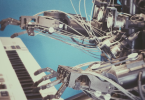There’s no field of industry that’s developing at a faster pace than technology. Not only does it improve its environment, but it also helps change the world altogether. All industries have been increasingly developing technological solutions aimed to help them grow and become more efficient. One of the areas in which this is easily recognizable is the automobile industry. Although relatively new compared to many others, car manufacturing has developed faster than most over the years.
Automobiles are some of the most ubiquitous things in the world, with many individuals and families owning at least one vehicle. However, raising concerns over pollution and climate change has created a new environment in which scientists and business owners have looked for ways in which to reduce the emissions produced by cars. While there have been steps made in the right direction, with electrical cars becoming more accessible, there’s still a long way to go in order for the world to reach the ideal of net zero emissions.

Cybertruck
One of the most futuristic-looking cars out there, the Cybertruck, was unveiled back in 2019. Since then, it has been delayed several times, with its launch expected to occur sometime in 2023. Not much is known so far, but the design was most definitely created to be exceptionally resilient. This is notable, considering most objects don’t seem built to last in today’s environment, where individuals ditch their older stuff even when it is still perfectly functional to buy the next new thing. Made of cold-rolled stainless steel atop a reinforced frame, it goes without saying that the Cybertruck will be a sturdy vehicle suitable for rough and uneven terrain.
The windows use a polymer-layered composite which makes the glass particularly strong. As such, the car is expected to be able to tow over 6,000 kilograms with little to no difficulty. However, what it will look like exactly and its range of abilities will only be determined after it becomes available on the market.
Meta Materials HUD
This vehicle seems to come straight out of a science fiction story. The technology used here enables holographic displays to come directly into the field of vision of the person behind the wheel. According to specialist research, this would hypothetically allow drivers to focus on the road more accurately. You’d no longer have to keep looking down at the display consoles or have your attention distracted elsewhere.
It’s also helpful as it would allow you to bypass the discomfort caused by differences in brightness when switching from the road to the vehicle’s tools and instruments. Theoretically, this would be able to improve the reaction time of the driver. Nonetheless, this type of technology is still far away from being implemented in a real-life context. The exciting thing about it, however, is that it could be added to virtually any car out there. Regardless, there would be a need for specific, authorized approval for it to become a reality.
Elevated cars
A South Korean multinational automotive manufacturer has recently unveiled a unique concept that combines wheels with robotic tools akin to legs. This could theoretically allow the car to move in ways that current vehicles are unable to, including climbing stairs or fitting into crowded parking lots much easier. It could also make moving heavy objects a much easier endeavor. On terrain that doesn’t allow it, the car could simply start “walking” around, a feature that would prove convenient for first responders that have to navigate collapsed debris in the aftermath of a flood, earthquake, or tsunami.
While this car is still in the prototype phase, it’s worth noting that it could become a reality sooner rather than later. The technology might even prove useful in helping to prevent accidents. Until then, however, if you’ve been involved in a traffic collision, you should reach out to https://www.accidentclaims.co.uk/. Talking to a specialized solicitor will enable you to receive the maximum amount of compensation that you deserve.
Pickup technology
The Canoo Pickup looks like something you might see nowadays, too, as it doesn’t appear to use any far-fetched technology. What it does have, however, is significantly increased functionality. Heavily modular, this pickup allows you to change the size and features of the vehicle as it suits you. You can extend or fold a pull-out bed, for example, meaning that you can have a smaller car that’s good for picking up speed, which you later morph into a larger automobile which allows better storage options. Some of the other built-in features include solar panels, integrated lighting, plugs, and drawers. While this may not seem like a lot from a technological standpoint, modular cars are a relatively rare concept, despite their high functionality and extensive use cases.
More from us: The Most Interesting Card Games To Play With a Standard Deck
AI: Trail
Artificial Intelligence is becoming commonplace, with more and more uses across several different industries. As such, a car that uses AI technology might not sound like all that much. This concept was revealed in 2019 and has created quite a stir among members of the automobile community. Several features associated with the car make it seem almost too futuristic for what you’d expect to see in the real world.
Among many other items, it features drones as well as detachable hammock seats. Naturally, it operates as a fully electric car, featuring antibacterial coating on armrests and dirt-repellent technology on the interior parts of the vehicle. The seats can be used comfortably during camping getaways, and they also make the car much easier to clean. The drones could find potential use in lighting up the route ahead if you’re driving at night. However, whether or not this model is realistically feasible for future cars remains to be seen. Even if it is not, there’s no denying that it is an exciting concept and could offer some indication of where the industry will go.
Nobody knows exactly how the automobile industry will develop. However, as the market changes and tech evolves, there are bound to be many different ways in which cars will become different from what is available today.






